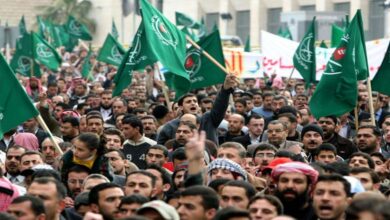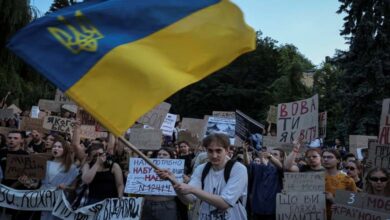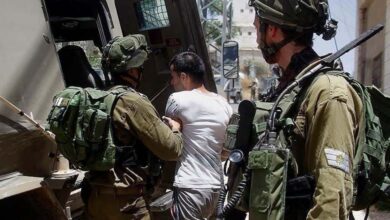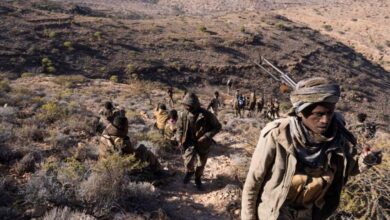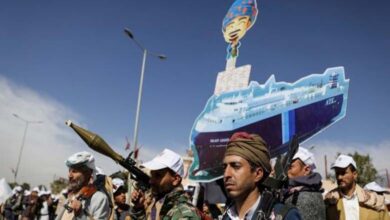Israel aims to establish buffer zone in Gaza to halt Hamas attacks
The Israeli state has informed Arab countries such as Egypt, Jordan, and the UAE of its post-war plan for the Gaza Strip
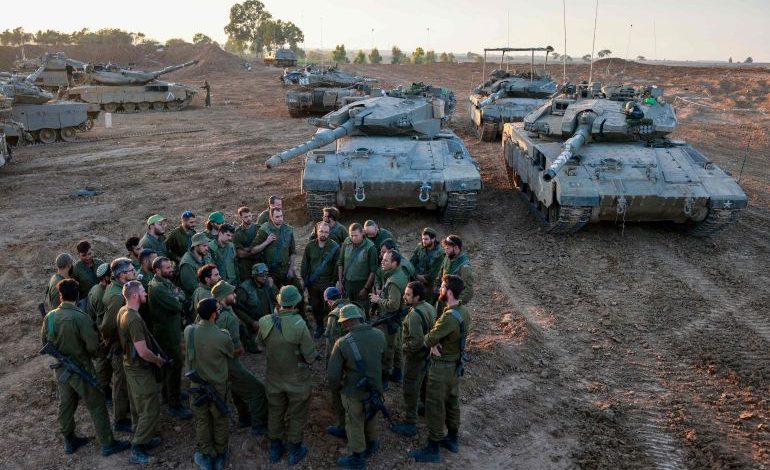
Israel has communicated its desire to create a buffer zone on the Palestinian side of the Gaza border to prevent any future attacks within the framework of proposals for the post-war period, according to Egyptian and regional sources.
Three regional sources stated that Israel has informed its neighbors, Egypt and Jordan, along with the UAE, with which it established relations in 2020, about this idea. The sources indicated that this idea has also been presented to Saudi Arabia, which does not have diplomatic relations with Israel and halted normalization efforts through U.S. mediation after the Gaza war in October.
The sources did not clarify how the information reached Riyadh, which does not have direct official communication channels with Israel. The sources also mentioned that Turkey has been informed of these plans.
The initiative does not indicate the end of the Israeli offensive, which resumed on Friday after a seven-day ceasefire. However, it shows that Israel is engaging with countries other than the known Arab intermediaries, such as Egypt or Qatar, in its efforts to determine the situation in Gaza in the post-war period.
No Arab country has expressed readiness to manage Gaza in the future, and most of them strongly condemned the Israeli attack, which claimed the lives of more than 15,000 people and destroyed large areas of urban areas in the Strip.
Israel claims that Hamas‘ attack on October 7 led to the death of 1,200 people and the capture of more than 200 others. A senior regional security official, one of the three sources that requested anonymity, stated, ‘Israel wants to establish this buffer zone between Gaza and Israel to the north and south to prevent any infiltration or attack by Hamas or any other militants.’
An Emirati official stated that his country would support any future arrangements for the post-war period agreed upon by all concerned parties to achieve stability and establish a Palestinian state.
Responding to a question about the idea of establishing a buffer zone, Ofer Foulk, foreign policy adviser to Israeli Prime Minister Benjamin Netanyahu, said, ‘The plan has more details than that. It is based on a three-level process for the day after the elimination of Hamas.’
In clarifying the Israeli government’s position, he said that the three levels include destroying Hamas, disarming Gaza, and eliminating extremism in the sector. He added, ‘The buffer zone may be part of the disarmament process.’ He refused to provide details when asked whether these plans had been discussed with international partners, including Arab countries.
-
‘Reporters Without Borders’ accuses Israel of turning Gaza into a graveyard for journalists… Details
Arab countries reject Israel’s goal of eliminating Hamas, describing it as impossible, stating that the Palestinian movement is more than just an armed force that can be defeated.
Israel has previously mentioned studying the establishment of a buffer zone within Gaza, but the sources now indicate that it is presenting it to Arab countries as part of its future security plans for Gaza. Israeli forces withdrew from the territory in 2005.
An unnamed U.S. official stated that Israel ‘floated’ the idea of the buffer zone without specifying the party to whom it was presented. However, the official reiterated Washington’s opposition to any plan that would diminish the territory of Palestinian lands.
Jordan, Egypt, and other Arab countries have expressed concerns about Israel’s expulsion of Palestinians from Gaza, fearing a repetition of land seizure from Palestinians upon the declaration of the State of Israel in 1948. The Israeli government denies any such intention.
A senior Israeli security source said that the idea of the buffer zone is ‘under study,’ adding, ‘It is not clear at the moment how deep it (the buffer zone) is, whether it will be one kilometer, two kilometers, or hundreds of meters (inside Gaza).’
Any incursion into the Gaza Strip, which is approximately 40 kilometers long and ranges between five and 12 kilometers in width, would lead to the encirclement of its 2.3 million inhabitants in a smaller area.
Egypt and Qatar lead mediation talks with Israel, focusing on the release of those held by Hamas in exchange for Israel releasing Palestinians detained in its prisons. Egypt was the first Arab country to sign a peace agreement with Israel, while Qatar maintains open communication channels with Israel despite the absence of official relations.
Two Egyptian security sources stated that Israel has proposed, during mediation talks with Egypt and Qatar, the idea of disarming the weapons from northern Gaza and establishing a buffer zone in the northern part of the sector under international supervision. The sources reported opposition from several Arab countries, indicating that Arab countries might not oppose the establishment of a security barrier between the two sides, but there is a disagreement about its location.
The Egyptian sources said that Israel, during a meeting in Cairo in November, stated that Hamas leaders should be tried internationally in exchange for a complete ceasefire. The sources quoted mediators saying that the discussion of this issue should be postponed until after the war to avoid hindering talks related to the release of detainees.
A source in the office of the Israeli Prime Minister declined to comment on these reports, adding, ‘The War Council led by Netanyahu has defined the war tasks: destroying Hamas, returning all detainees home, and continuing (the fight) until our missions are completed.’
One of the Egyptian sources stated that Israel has shifted in its discussions with Egypt and Qatar from focusing on responding to the attack, the position it previously adopted earlier in the crisis, to showing greater willingness ‘to reconsider its demands as mediation continues.’
Regional sources likened the idea of the buffer zone in Gaza to the ‘security zone’ that Israel established in southern Lebanon. Israel evacuated that zone, which extended about 15 kilometers deep, in 2000 after years of fighting and attacks by the Lebanese Hezbollah party.
The sources added that Israel’s plan for Gaza in the post-war period includes expelling Hamas leaders, a measure similar to the Israeli campaign in Lebanon in the 1980s when it expelled leaders of the Palestine Liberation Organization, which conducted attacks from Lebanon on Israel.
One informed regional official involved in the talks stated that Israel is prepared to pay a hefty price to expel Hamas entirely from Gaza to other countries in the region, similar to what it did in Lebanon. However, he noted that it is not a comparable situation, adding that getting rid of Hamas is difficult and uncertain, while a senior Israeli official stated that Israel does not consider Hamas like the Palestine Liberation Organization and does not believe it will act like it.
Mohammed Dahlan, the former head of preventive security in Gaza affiliated with Fatah, which was expelled from the sector after Hamas took control in 2007, stated that Israel’s plan for the buffer zone is unrealistic and will not protect Israeli forces. He added that the buffer zone may make Israeli forces a target in the area.
US Vice President Kamala Harris will outline American post-conflict goals in Gaza today, Saturday, emphasizing the necessity of reuniting the Palestinian people in Gaza and the West Bank ultimately under one governing entity. She will participate in a series of meetings at the United Nations Climate Change Conference (COP28) in Dubai, deputized by US President Joe Biden to represent him at the summit while focusing on the war between Israel and the Palestinians.
The White House stated that Harris will deliver a message regarding post-conflict Gaza as the region faces the repercussions of the war that has turned the Middle East upside down. An official in the White House mentioned, ‘She will emphasize that any plan for post-conflict Gaza must include a clear political horizon for the Palestinian people and ensure the reunification of Gaza and the West Bank under one entity.’
US officials have discussed strengthening the Palestinian Authority so that it can expand its operations to include Gaza, but a concrete plan has not been agreed upon yet. Some US officials, in private talks, expressed doubts about the Palestinian Authority’s ability to manage Gaza after the war. Critics accused the Palestinian Authority of corruption and mismanagement, and opinion polls showed low credibility among the Palestinian people.
-
Israel Loses International Support: A British Newspaper Warns of the Continuation of the War in Gaza
Harris will meet with regional leaders and consult with them on the latest developments in Gaza, including Sheikh Mohammed bin Zayed Al Nahyan, the President of the United Arab Emirates. The White House official stated, ‘In her meetings, the Vice President will outline the principles regarding post-conflict Gaza and will present specific proposals to facilitate the engagement of Palestinian voices in the process and garner regional support for our efforts.’
In later statements on Saturday, Harris will express the United States’ desire to return to the ceasefire between Israel and Hamas to release more hostages from Gaza and allow humanitarian aid to flow again. John Kirby, the spokesperson for the National Security Council at the White House, told reporters in Washington, ‘She will certainly clarify that, as we have said many times before, we believe that the Palestinian people need to participate in determining their future and play a role in it, and that there is a need for governance in Gaza that cares for its aspirations and needs.’


